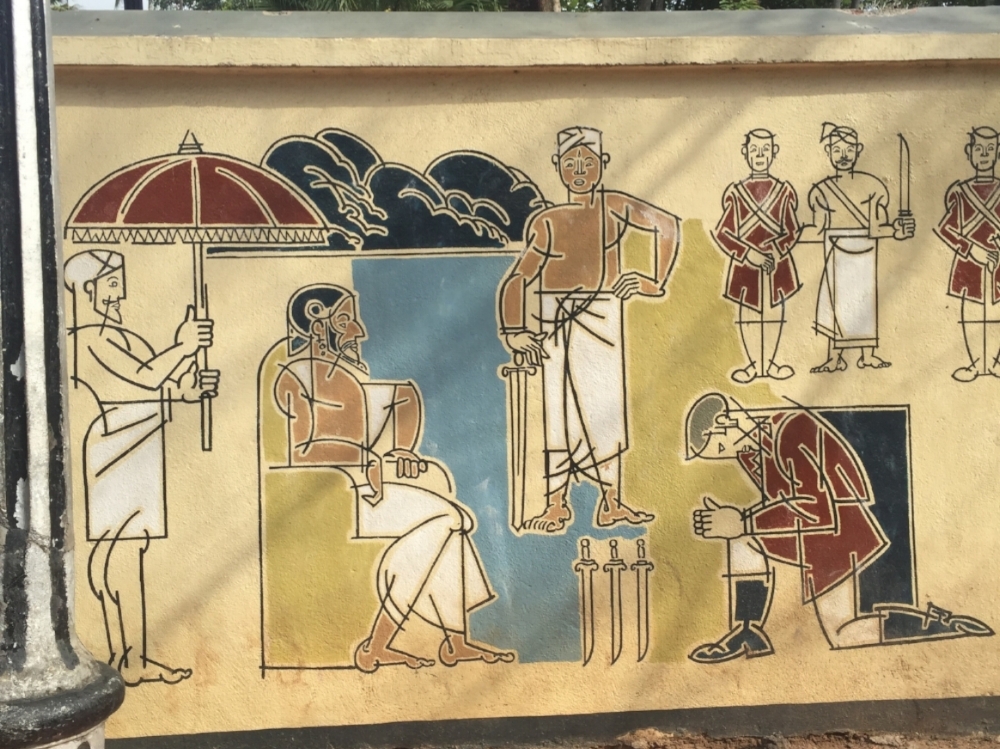
Here, Marthanda Varma is seen receiving De Lannoy after the Dutch loss in the Battle of Colachel in 1741. De Lannoy went on to become Travancore army's Commander-in-General.
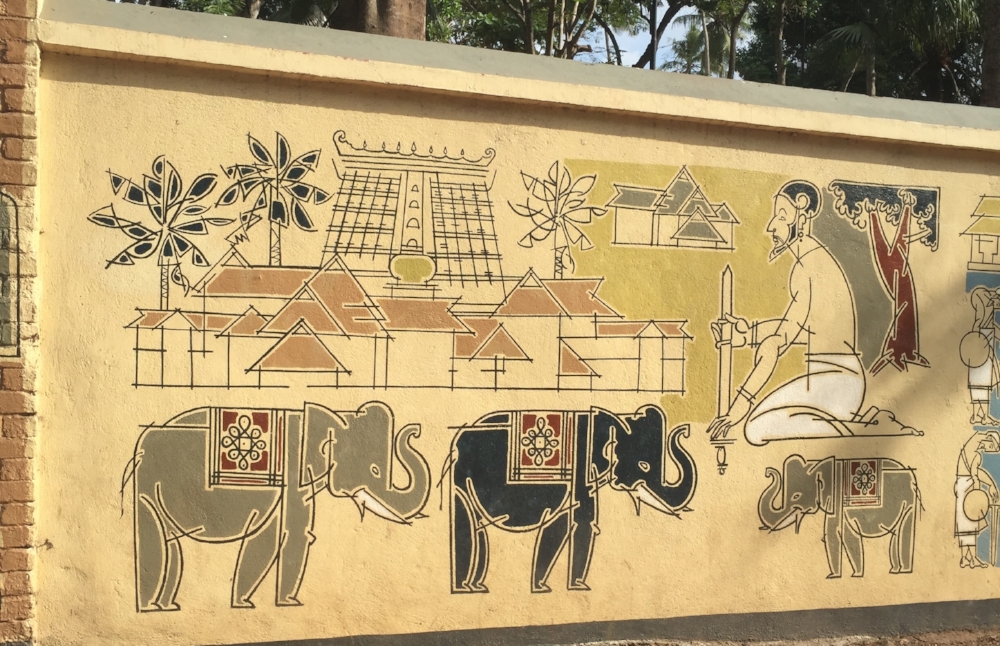
The mural depicts the event of Thripadidaanam where Marthanda Varma submitted Travancore to the deity of Lord Padmanabha and declared himself as vice-regent serving the Lord and overseeing Travancore as a mere proprietor on the Lord's behalf.
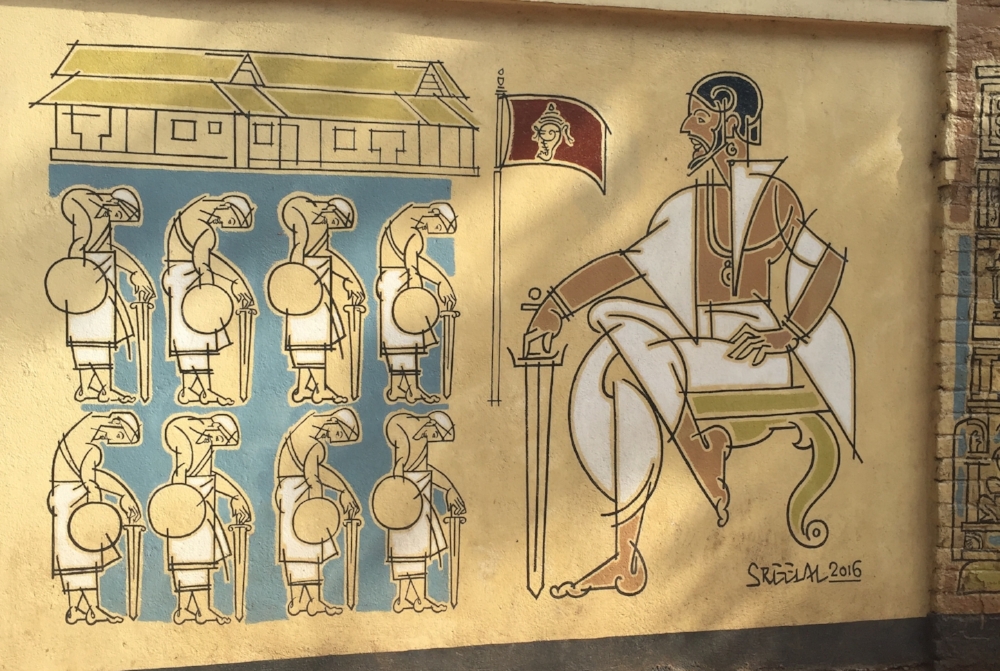
The two walls dedicated to showing Marthanda Varma's era (only he has been given two walls) ends with him seated in front of his army with the Travancore flag fluttering in the background.

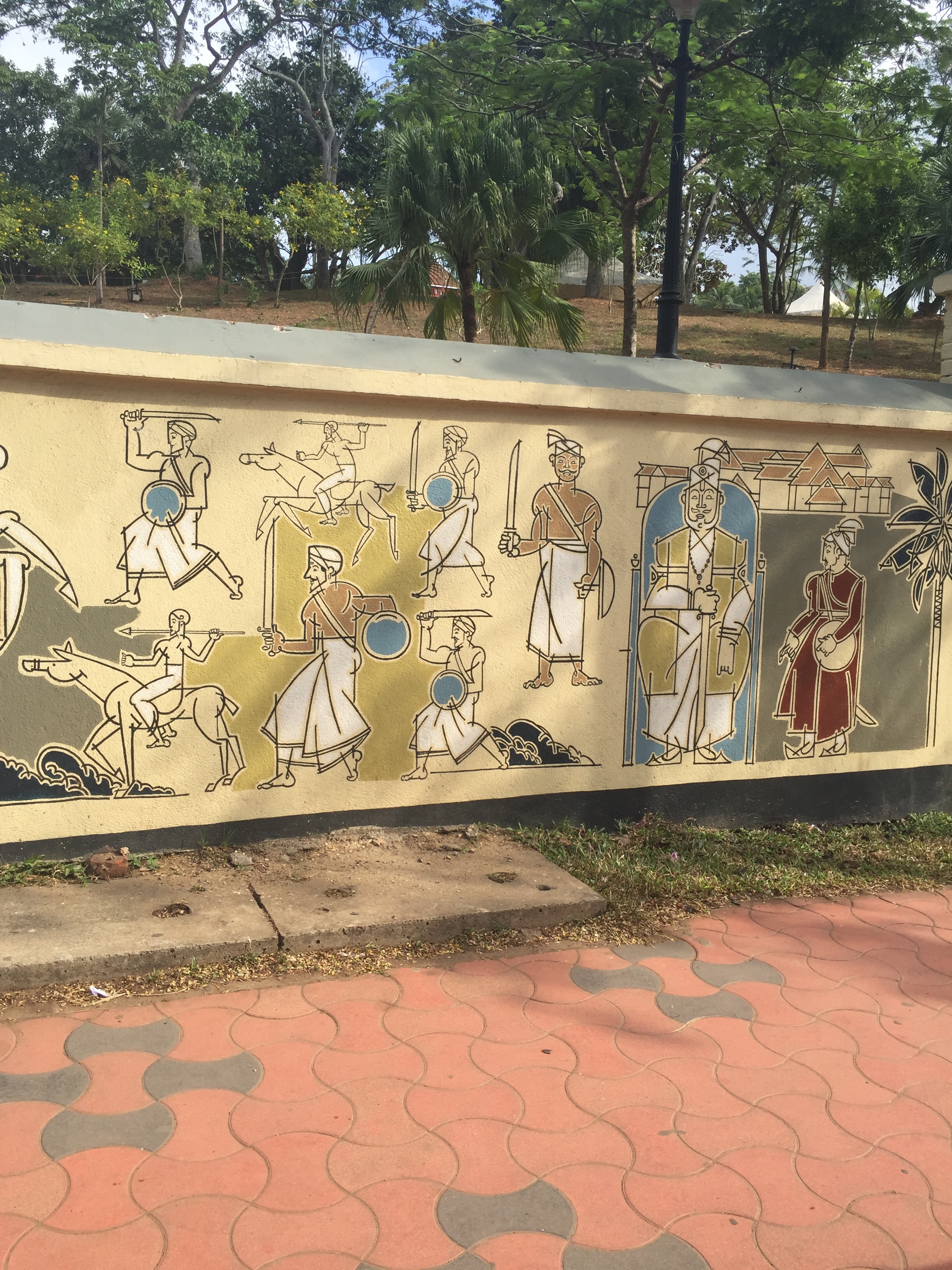
Dharma Raja, with the help of De Lannoy and British repelled Tipu Sultan's army once, and then, later, agreed to a truce. Known for his generosity in donating land and building residences for the disposed Kshatriyas and Bhramins from north Kerala who migrated south to escape Tipu's persecution.
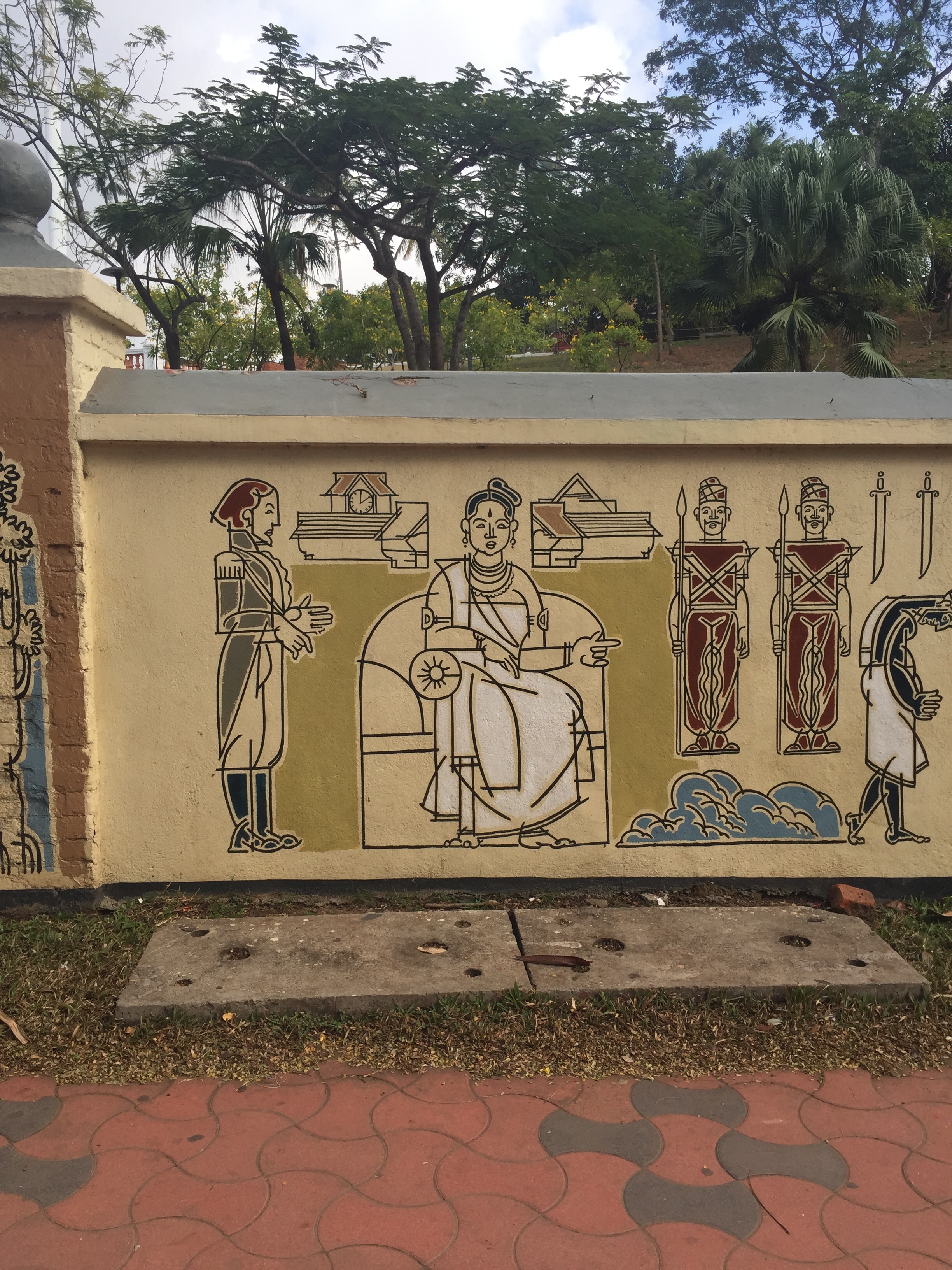
From 1812-1815, and 1815-1829, two queen regents--Ayilyam Thirunal Lakshmi Bayi and Uthrittati Thirunal Parvati Bayi, ruled Travancore until Swathi Thirunal Rama Varma (1829-46) came of age. They were assisted by British Resident Colonel John Munro, perhaps depicted here on the right-hand side of the queen. Both queens have been combined into a single visual.
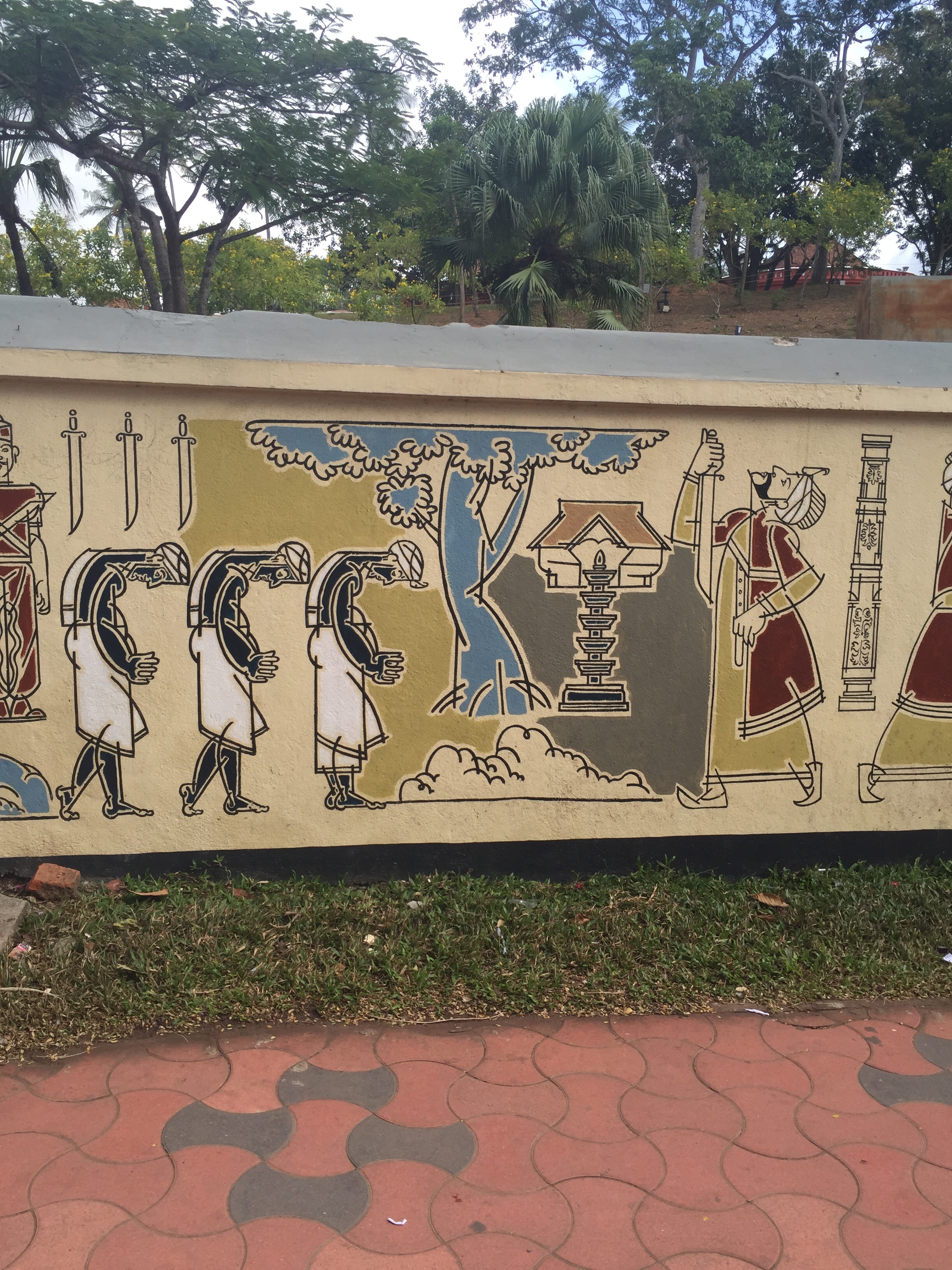
Velu Thampi Dalawa (Prime Minister of Travancore from 1802-1809) is anachronistically placed after the Queen regent here; his time was right before during the reign of Balarama Varma. Thampi is now regarded a nationalist hero who defected and opposed the British, and finally, at the fear of being caught, killed himself at Mannadi temple. With his death, the rebellion was finally crushed in 1809.
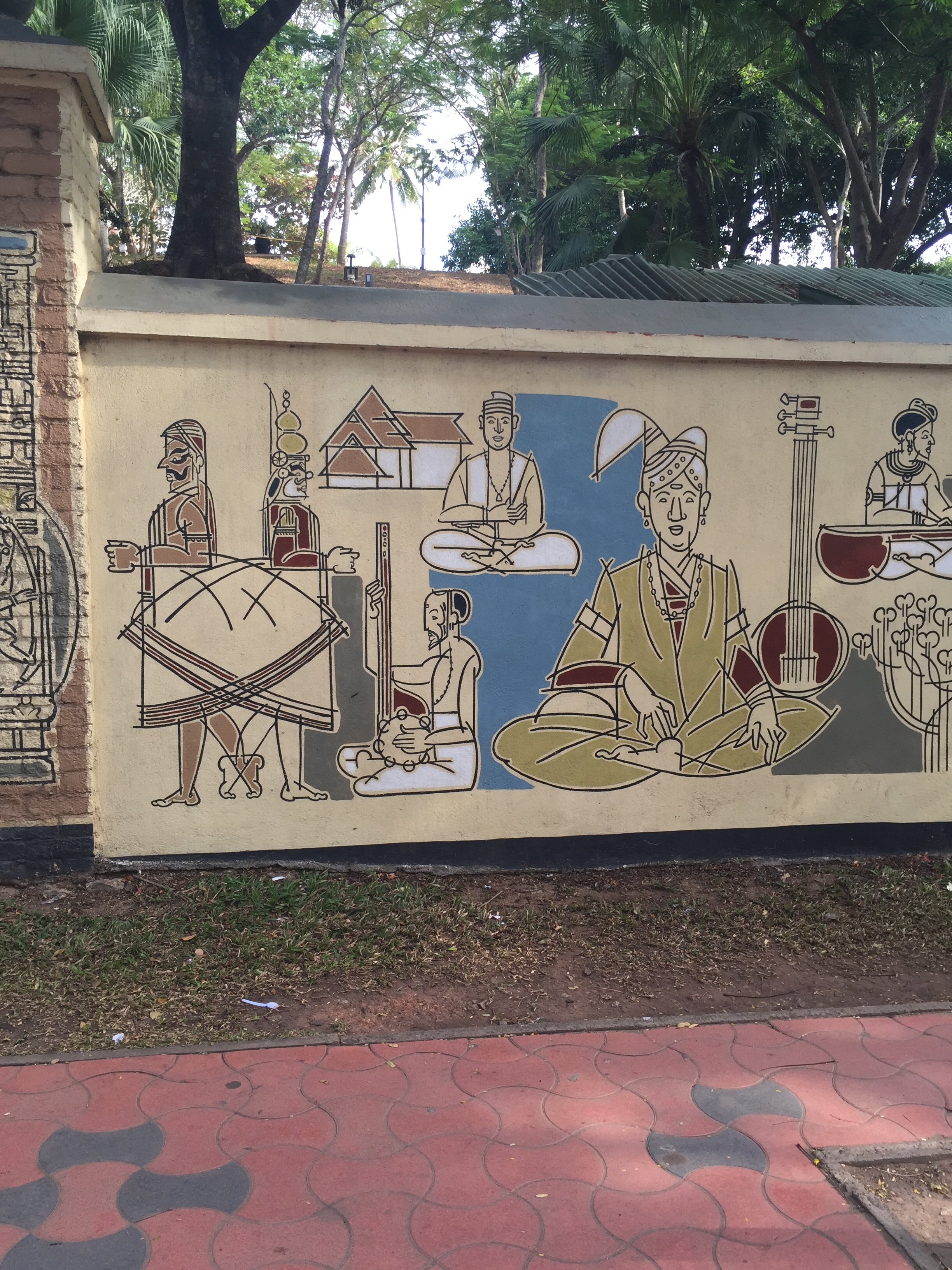
Swathi Thirunal Rama Varma (1829-40) is unsurprisingly depicted alongside all kinds of performing art forms.
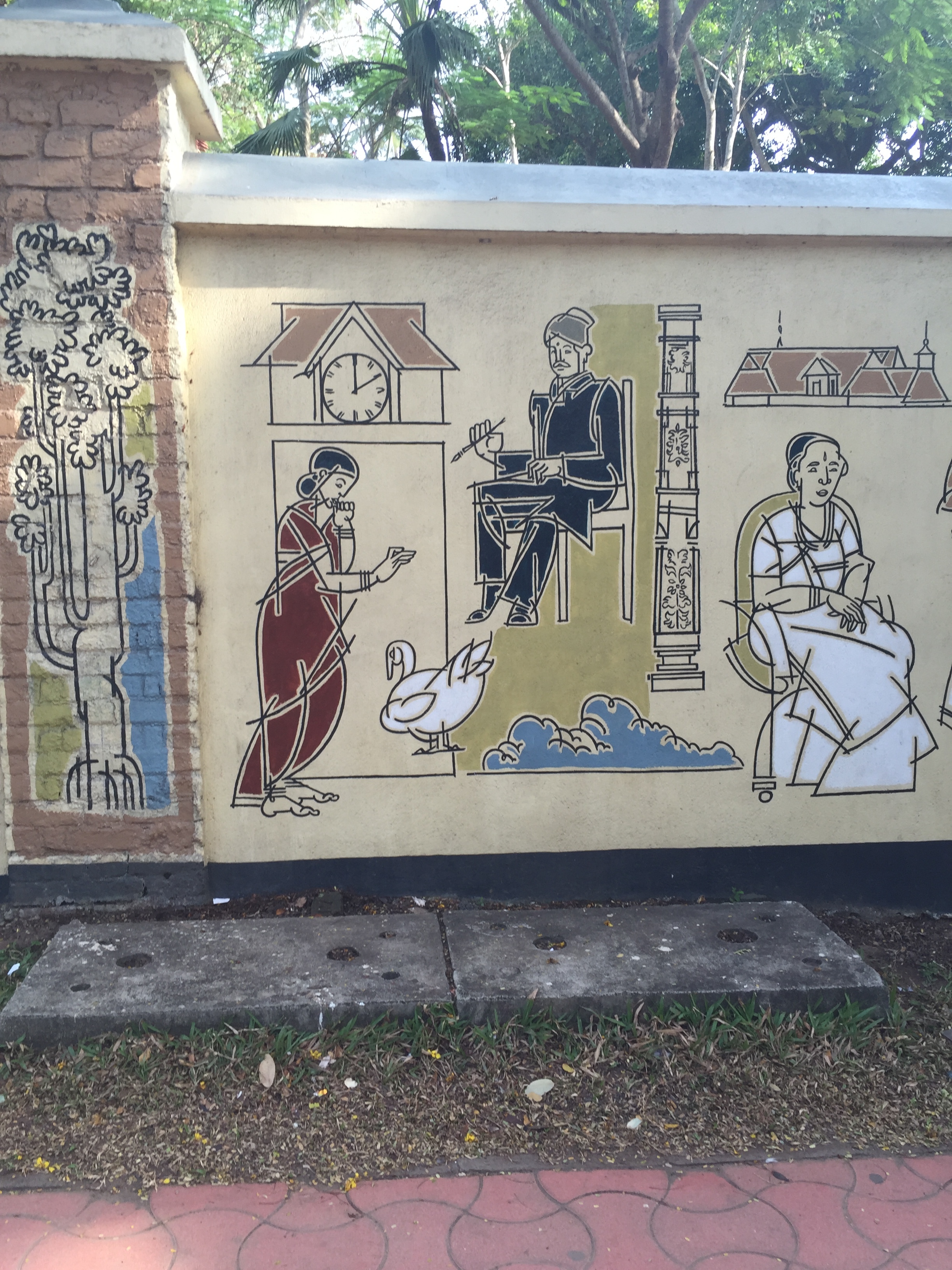
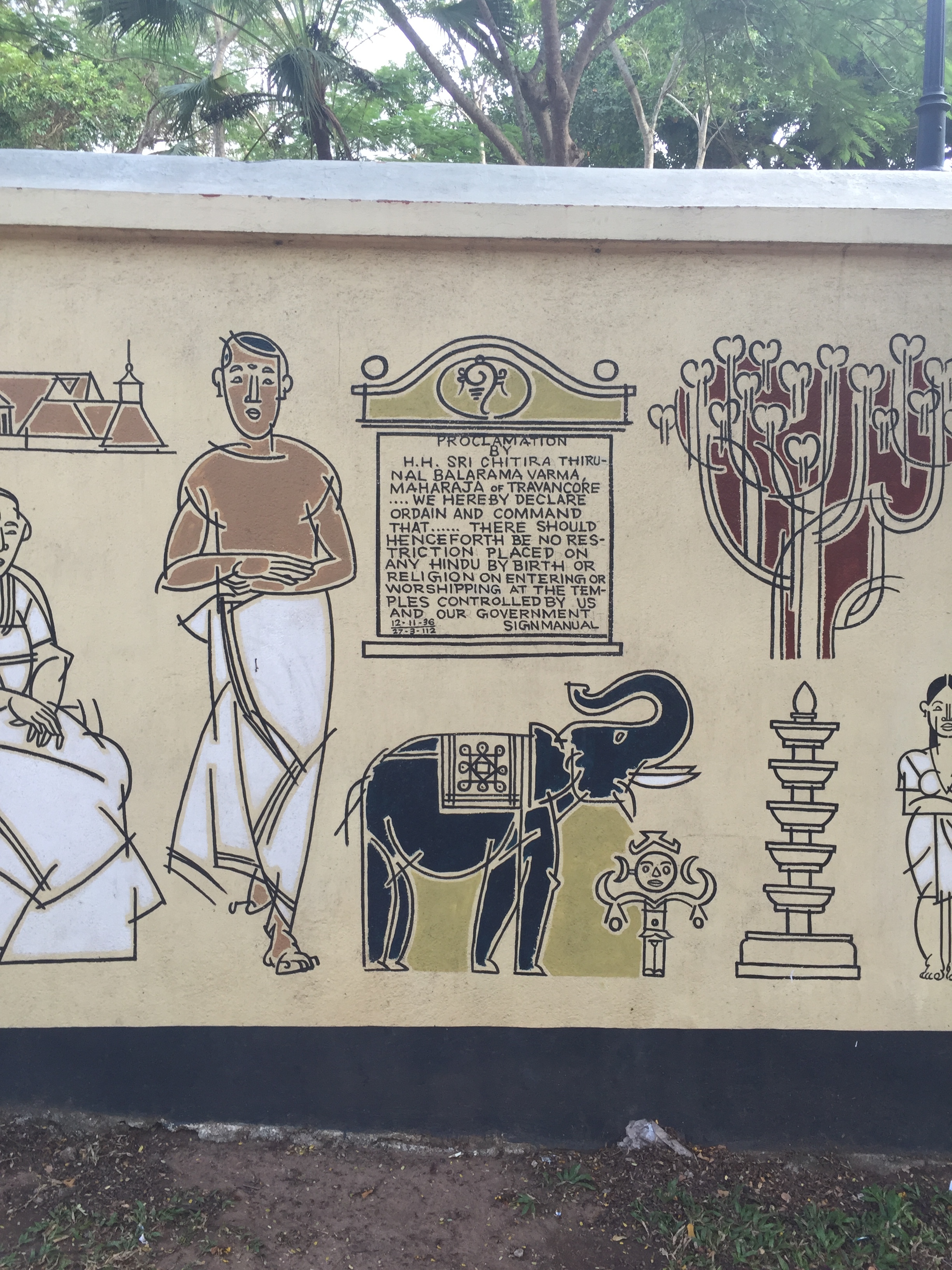
Highlighted here is the 1930s proclamation permitting Hindus of all castes to enter temples in Travancore.
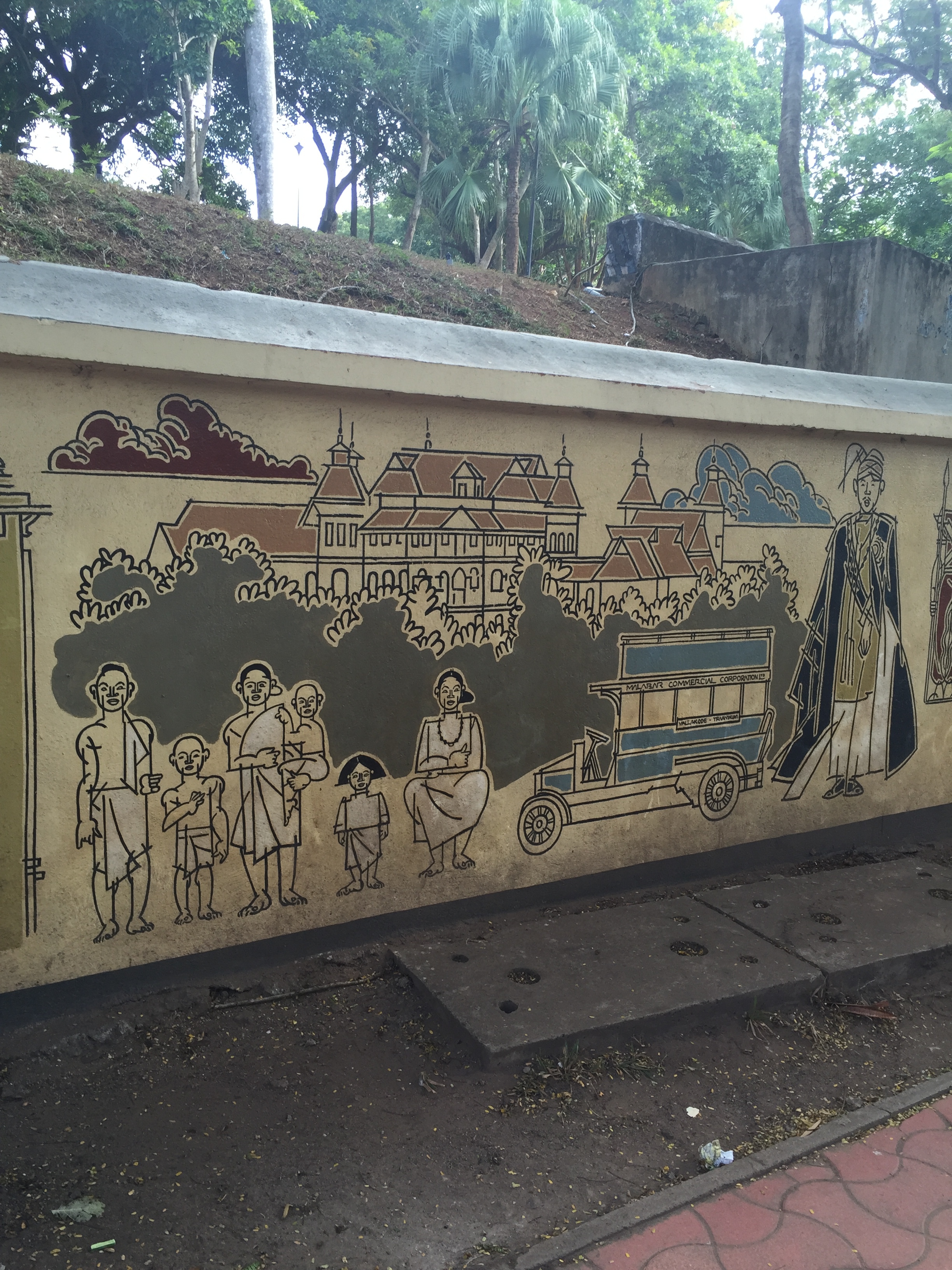













Here, Marthanda Varma is seen receiving De Lannoy after the Dutch loss in the Battle of Colachel in 1741. De Lannoy went on to become Travancore army's Commander-in-General.
The mural depicts the event of Thripadidaanam where Marthanda Varma submitted Travancore to the deity of Lord Padmanabha and declared himself as vice-regent serving the Lord and overseeing Travancore as a mere proprietor on the Lord's behalf.
The two walls dedicated to showing Marthanda Varma's era (only he has been given two walls) ends with him seated in front of his army with the Travancore flag fluttering in the background.
Dharma Raja, with the help of De Lannoy and British repelled Tipu Sultan's army once, and then, later, agreed to a truce. Known for his generosity in donating land and building residences for the disposed Kshatriyas and Bhramins from north Kerala who migrated south to escape Tipu's persecution.
From 1812-1815, and 1815-1829, two queen regents--Ayilyam Thirunal Lakshmi Bayi and Uthrittati Thirunal Parvati Bayi, ruled Travancore until Swathi Thirunal Rama Varma (1829-46) came of age. They were assisted by British Resident Colonel John Munro, perhaps depicted here on the right-hand side of the queen. Both queens have been combined into a single visual.
Velu Thampi Dalawa (Prime Minister of Travancore from 1802-1809) is anachronistically placed after the Queen regent here; his time was right before during the reign of Balarama Varma. Thampi is now regarded a nationalist hero who defected and opposed the British, and finally, at the fear of being caught, killed himself at Mannadi temple. With his death, the rebellion was finally crushed in 1809.
Swathi Thirunal Rama Varma (1829-40) is unsurprisingly depicted alongside all kinds of performing art forms.
Highlighted here is the 1930s proclamation permitting Hindus of all castes to enter temples in Travancore.